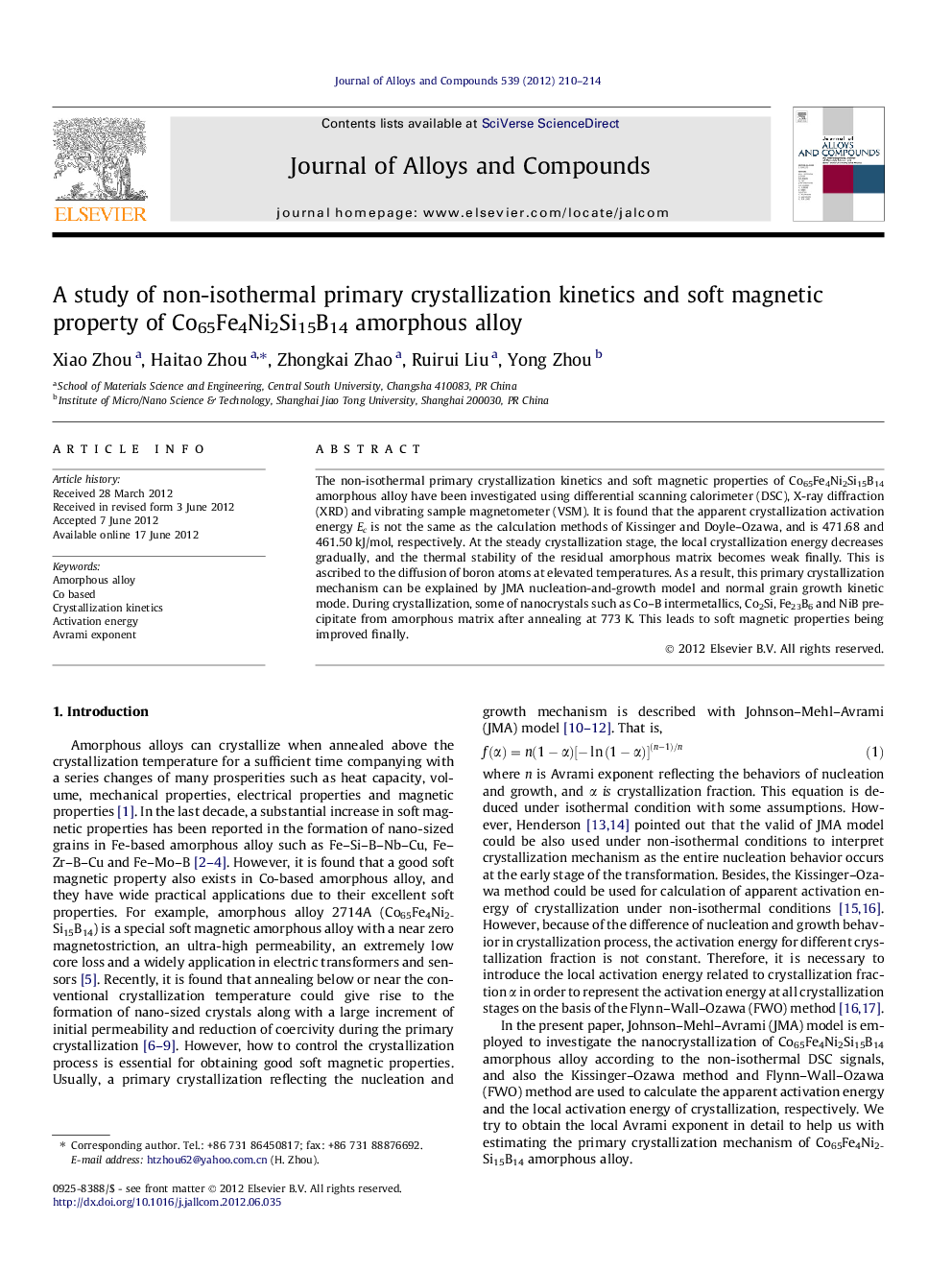| Article ID | Journal | Published Year | Pages | File Type |
|---|---|---|---|---|
| 1615722 | Journal of Alloys and Compounds | 2012 | 5 Pages |
The non-isothermal primary crystallization kinetics and soft magnetic properties of Co65Fe4Ni2Si15B14 amorphous alloy have been investigated using differential scanning calorimeter (DSC), X-ray diffraction (XRD) and vibrating sample magnetometer (VSM). It is found that the apparent crystallization activation energy Ec is not the same as the calculation methods of Kissinger and Doyle–Ozawa, and is 471.68 and 461.50 kJ/mol, respectively. At the steady crystallization stage, the local crystallization energy decreases gradually, and the thermal stability of the residual amorphous matrix becomes weak finally. This is ascribed to the diffusion of boron atoms at elevated temperatures. As a result, this primary crystallization mechanism can be explained by JMA nucleation-and-growth model and normal grain growth kinetic mode. During crystallization, some of nanocrystals such as Co–B intermetallics, Co2Si, Fe23B6 and NiB precipitate from amorphous matrix after annealing at 773 K. This leads to soft magnetic properties being improved finally.
► Ec of Co65Fe4Ni2Si15B14 is calculated by Kissinger and Doyle–Ozawa method. ► Primary crystallization is a multi-stage continuous nucleation up to saturation. ► Thermal stability of residual amorphous is weak at the steady crystallization stages. ► The best soft magnetic property is obtained after annealing at 773 K for 30 min.
